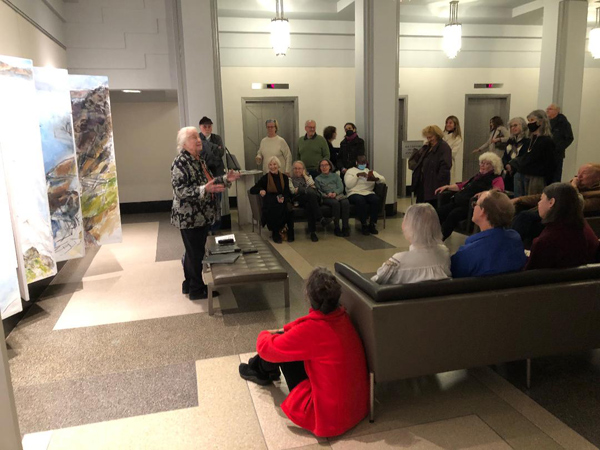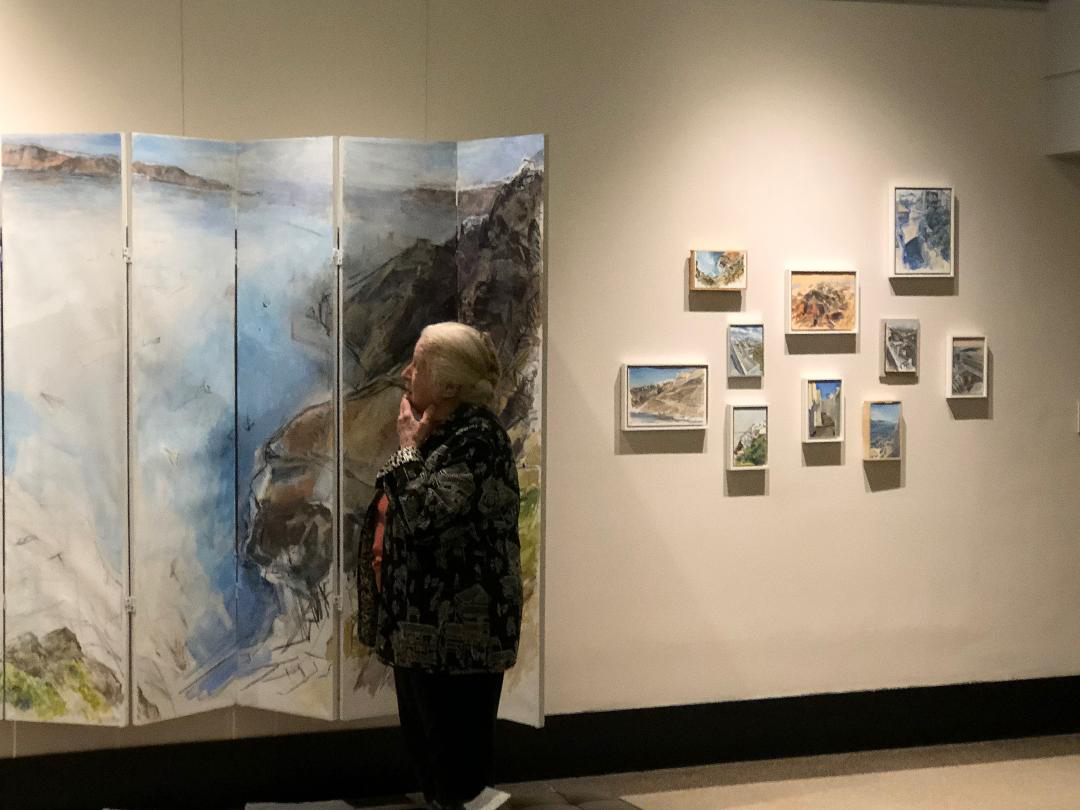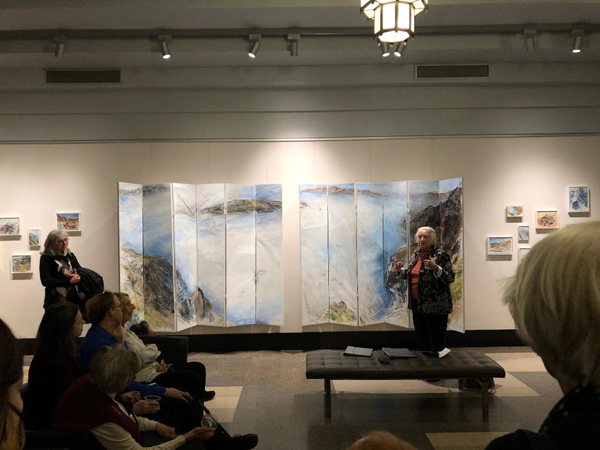Palimpsests of Place and Process
Painting for me is a layered process that sometimes goes very quickly but often progresses at a glacial pace. To state that I usually proceed from scribble to drawing, to oil study, to something bigger, leaves out the story of all the layers of back and forth that continues until a piece stands on its own.
I think it can be said that I don't simply observe the places where I choose to paint, but I am a participant. Whether in the natural or architectural world, I use all my senses, and an affinity for these places with their varied palimpsests of events shaping them, guides my choices.
The work in this show was inspired by visits to the Greek islands of Santorini and Crete, made possible by three artists’ residencies beginning in 2018. Both islands are rich in Minoan history and have a geologic past that still echoes with frequent earthquakes, reflected and etched into the rock faces. It’s the sense of the stratification of natural elements over time that draws me to these places. The primary subject in this show is Santorini, with its rocky cliffs and islands surrounding a caldera, submerged under the sea. Studies from Crete form a kind of subtext, several showing meandering architectural passages in the landscape. While in Santorini, I began with drawings on site, on the cliffs, overlooking an ancient stone quarry, down at the ports, and on boat trips looking back toward the rocky coast. These were done in small sketchbooks and, if taking in the greater panorama, in accordion sketchbooks.
The idea for a folding screen grew from a series of panoramic drawings. When the drawings seemed too contained, I went to a larger size but found I had to keep lengthening the format. I was visualizing what I had seen sitting for hours up on the cliffs, watching the sea and the smaller islands stretched out around the caldera and the Aegean stretching out beyond them. The screen itself started out with eight sections and now has twelve. Once I felt that the islands would not move in their relationship to each other, I anticipated boats in the water and then the pervasive birds, rising, descending, and circling the cliffs. The ships and the birds are there, but only in bare suggestion.
Most of the little oil studies you see here are on aluminum flashing. I like aluminum; It is lightweight and, even through layers of gesso, seems to provide luminosity. Also, it doesn’t give, or talk back, as a canvas will do, so we have a more serene relationship.
I sometimes incorporate maps in my paintings. The port study in this exhibition developed into a larger piece painted over a map transfer. I think of a map as a kind of footprint that gives the measure of a place and stands in for it. Incorporating the map transfer added both a physical and conceptual layer to the painting. With an awareness that the layering of rock in a cliff face shows its geologic history, I layered paint over the conceptual base of the map, allowing the physical textures of bothto mingle. It metaphorically allowed me to reach back through the layers of time etched into the rock edifices, revealing its stratified history, its own palimpsest process.
—Marcia Clark



Photos: Kim Do